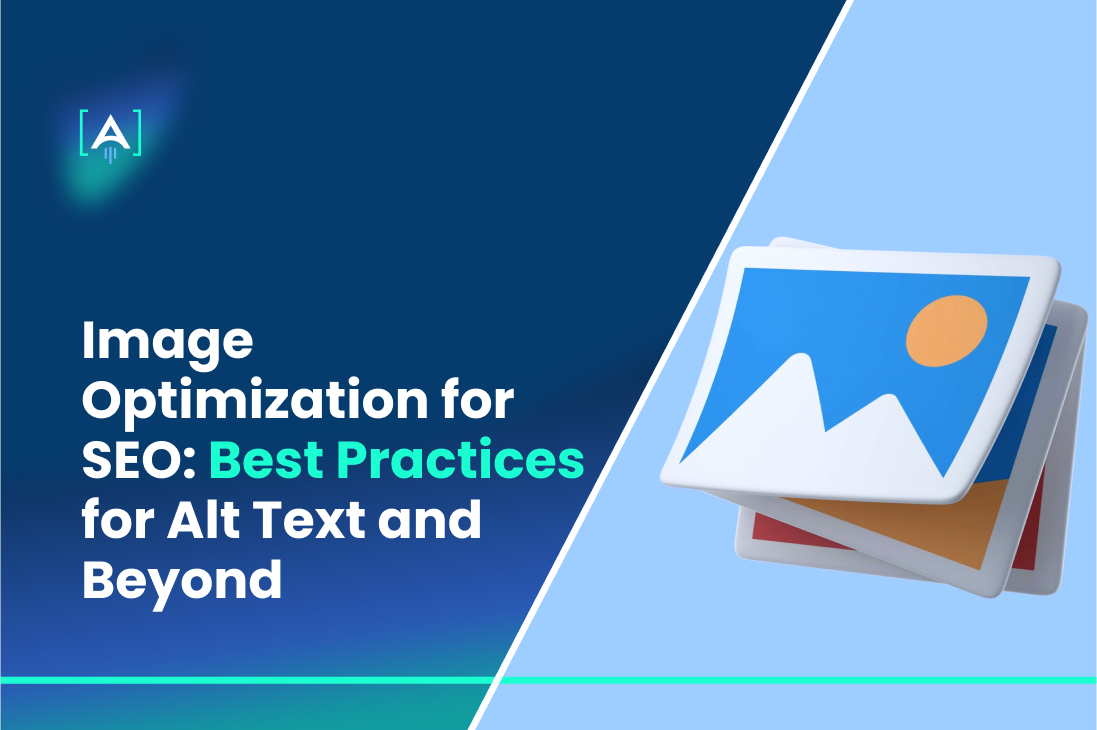Visuals are king in an era when internet speeds are incredibly fast, and attention spans are increasingly short.
But how do you ensure that those stunning images on your website aren’t just pretty faces?
Enter the magic of image optimization for SEO. It’s like giving your images a voice for search engines, visually impaired users, and anyone who wants a richer experience on your site.
According to a Skyward study, content with relevant photos or Infographics saw a 94% increase in page views versus content without images.
Source: HubSpot
An experienced SEO agency can provide expert guidance and implementation strategies to ensure images are fully optimized to enhance a website’s SEO performance.
The blog post will cover how Image optimization can benefit SEO considering the Alt text and other elements.
Why Images Matter in SEO
Images are more than just a visual aid to make content appealing. They significantly affect search engine optimization (SEO) and user engagement.
Source: Azaryan Growth Agency
Incorporating images effectively into your SEO strategy can significantly enhance your website’s visibility and interaction rates.
The Role of Images in User Engagement and SEO
Engaging Users with Visuals
Humans are visually oriented creatures, and images are one of the fastest mediums to grab our attention. Websites with high-quality, relevant images engage users better than those with dense text blocks.
When images are used effectively, engagement metrics such as time on site, bounce rate, and user interactions can substantially improve. This increased engagement signals to search engines that your website offers value, potentially boosting your rankings.
Enhancing SEO with Images
From an SEO perspective, images offer several benefits that can’t be overlooked:
SEO Image Optimization and Image SEO Optimization: When images are optimized for SEO, including proper file names and using the right formats, they contribute to faster page load times and better user experiences.
Optimized images are also easier for search engines to crawl and index, enhancing their visibility in image search results.
Image Alt Text and Alt Text Usage: Alt text is an image’s content descriptor. It is crucial for accessibility, allowing screen readers to describe images to visually impaired users and helping search engines understand the context of the images.
Adding relevant keywords to your image alt text strengthens your SEO strategy by making images an important part of your site’s SEO. Title tags and meta descriptions are also key elements of on-page SEO that help search engines understand and display your webpage more effectively.
Image File Naming and Structure: How you name your image files can impact your SEO. Descriptive, keyword-rich file names are more likely to rank in image searches. This method is a part of effective SEO image optimization, helping search engines understand and rank your content better.
Leveraging Image Search: With the growth of visual search technology, images have become a key entry point in search engines. Optimized images increase your visibility in image search results, driving more site traffic. Furthermore, images can appear in general search results, enhancing your content’s reach and engagement.
Integrating SEO Strategy with Images: Images should be integrated into the overall SEO strategy through careful selection and optimization. This includes everything from the image size and format to the alt text and how they fit the content’s theme.
Keyword Research SEO and Competitor Keyword Research: Effective image SEO isn’t just about optimizing what you already have; it’s also about strategic planning using keyword research.
By understanding which terms your audience searches for, you can tailor your image alt texts and file names to these queries.
Similarly, competitor keyword research can inform you of gaps in their strategies that you can capitalize on, potentially giving you an edge in standard and image search rankings.
Long-Term SEO Benefits
The strategic use of images can lead to sustained SEO benefits. Sites with well-optimized images tend to perform better not only in direct searches but also in related searches.
For instance, a comprehensive SEO strategy with high-quality images tagged with relevant, researched keywords can enhance the site’s authority and relevance in a niche. However, the relevant thing is to remember to avoid SEO keyword cannibalization.
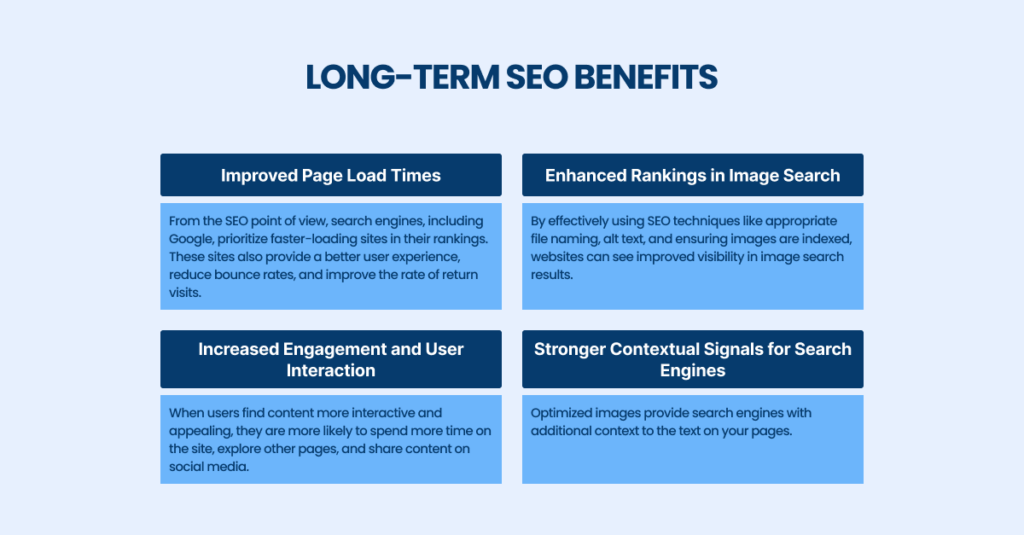
Core Components of Image Optimization
Optimizing images is a crucial aspect of modern SEO strategies. It enhances site speed and user engagement and boosts your site’s visibility in search engine results.
This detailed overview will cover the core components of image optimization: alt text, file size, image format, and accessibility.
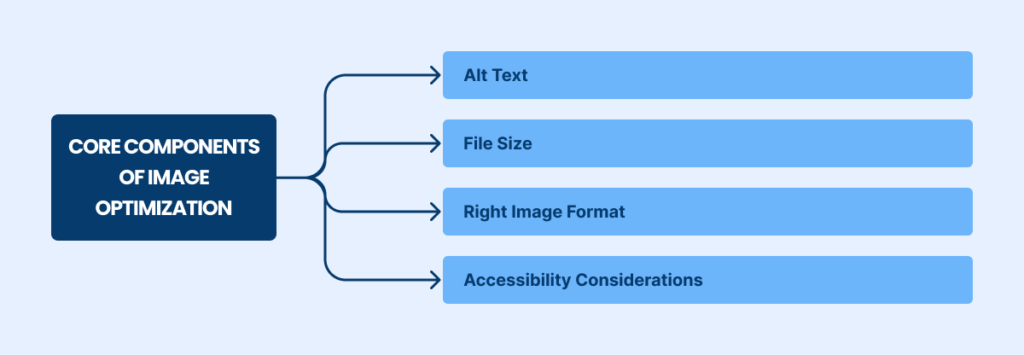
These elements are essential for leveraging SEO image optimization and advanced SEO techniques like programmatic SEO and AI in SEO.
Importance of File Size
The size of an image file directly impacts a webpage’s load time, which is a critical factor in user experience (UX SEO) rankings.
Optimizing images for web use typically involves reducing file size without significantly compromising image quality.
Techniques such as lossless compression, where no data is lost from the original file, or lossy compression, which reduces file size by permanently eliminating some data, can be used.
As part of SEO image optimization, reducing file size should be balanced with maintaining sufficient image quality to ensure that the visual presentation remains professional and crisp.
Choosing the Right Image Format
The format of an image can greatly affect the file’s quality and size.
The most common image formats used on the web are JPEG, PNG, GIF, and, more recently, WebP. JPEG is ideal for photographs and detailed images with many colors, whereas PNG is better for images requiring transparency or not having a wide color range.
GIFs are suitable for simple animations. WebP, a newer format, provides high-quality results with smaller file sizes and supports animation and transparency, making it an excellent choice for various SEO needs.
Choosing the right format is a key part of image SEO optimization. It requires understanding the balance between file size and quality to ensure fast page loads and appealing visual presentation.
Accessibility Considerations
Accessibility is an integral component of image optimization, especially in light of advanced SEO and programmatic SEO, where scalability and automation are involved.
Ensuring that images are accessible to all users, including those with disabilities, is not only a matter of legal compliance but also extends the reach of your content and opens up additional audience segments.
An image sitemap can improve SEO by ensuring search engines recognize and index all images.
By including detailed captions and structured data in your images, sitemaps can enhance the discoverability of images and provide more context to search engines, aligning with AI in SEO strategies that predict and match user intent.
What is Alt Text?
Alt text, short for “alternative text,” is critical to web accessibility and image SEO optimization. It is an attribute added to an image tag in HTML to provide a text alternative for search engines and assistive technologies like screen readers used by people with visual impairments.
The alt tag serves multiple purposes: it enhances accessibility, offers a context when images cannot be displayed, and provides semantic information to search engines, which helps index images more effectively.
Source: Hubspot
For effective SEO, every image should include an alt attribute that is descriptive yet concise, integrating relevant keywords without resorting to keyword stuffing.
The primary purpose of alt text is to describe images to those who cannot see them. This description helps users understand image content and context when they can’t see the image, such as when images fail to load or in a screen reader scenario.
From an SEO perspective, alt text is pivotal because it helps search engines understand what an image is about, which can influence how it appears in search results.
It doesn’t matter if you compare the strategies for on-page SEO vs. off-page SEO. This is especially relevant in image search optimization, where well-crafted alt text can contribute significantly to a website’s visibility and traffic.
Given the complex algorithms used by search generative engines (SGE) like Google, which factor in the relevance and context provided by alt text under their E-E-A-T Google (Expertise, Authoritativeness, Trustworthiness) guidelines, the strategic use of alt text becomes even more crucial.
Crafting Effective Alt Text
Creating effective alt text is a skill that balances accessibility and SEO optimization.
The process involves describing images in a way that both serves users and improves a website’s search engine rankings.
To craft alt text that meets these dual purposes, it’s important to focus on being descriptive and contextually relevant while also incorporating targeted keywords naturally.
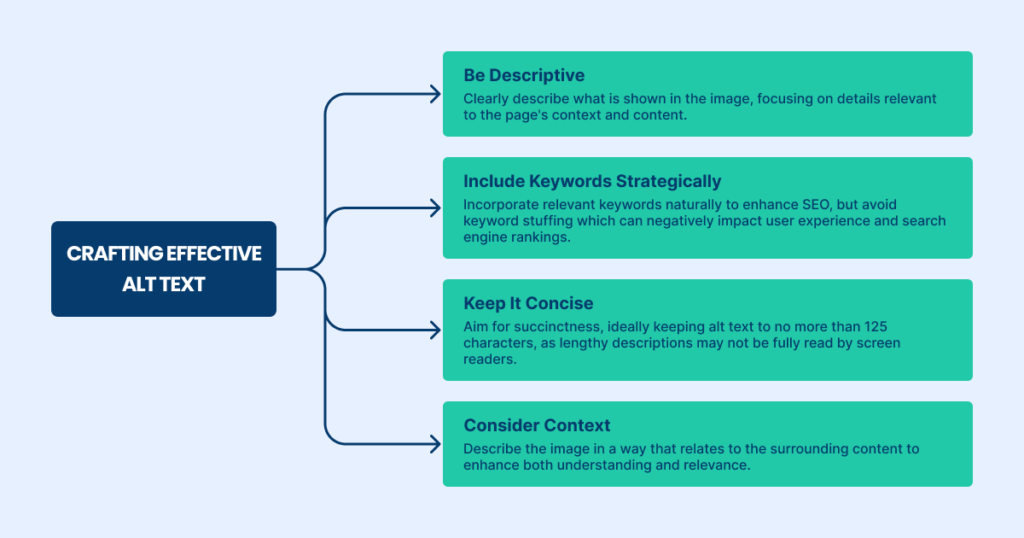
When writing alt text, the goal is to provide a clear and concise description of what is shown in the image. This involves more than just stating what it is but also explaining its context within the content, which enhances understanding for users who cannot see the image.
For instance, instead of simply describing an image as “a dog,” a more effective alt text would be “a golden retriever sitting on a grassy field under a clear blue sky,” which gives a fuller picture of what the image represents.
Incorporating white hat SEO strategies into alt text involves utilizing relevant keywords that describe the image and align with the content’s focus and search terms targeted by the website. This approach helps boost the image’s relevance in search results, contributing to the site’s overall SEO performance.
However, it’s crucial to avoid keyword stuffing in alt text, which can lead to search engine penalties and degrade the user experience. The integration of keywords should feel natural and relevant to the image description.
The effectiveness of alt text can also be enhanced by considering international SEO principles. This includes using language and terms that are understandable by a global audience or localizing alt text based on the website’s geographical focus.
SEO automation tools can assist in scaling the process, especially for websites with large numbers of images, by automatically generating alt text that adheres to these best practices.
Optimizing Image File Size and Format
Optimizing the file size and format of images on your website is crucial for enhancing page load speeds and improving overall on-site SEO.
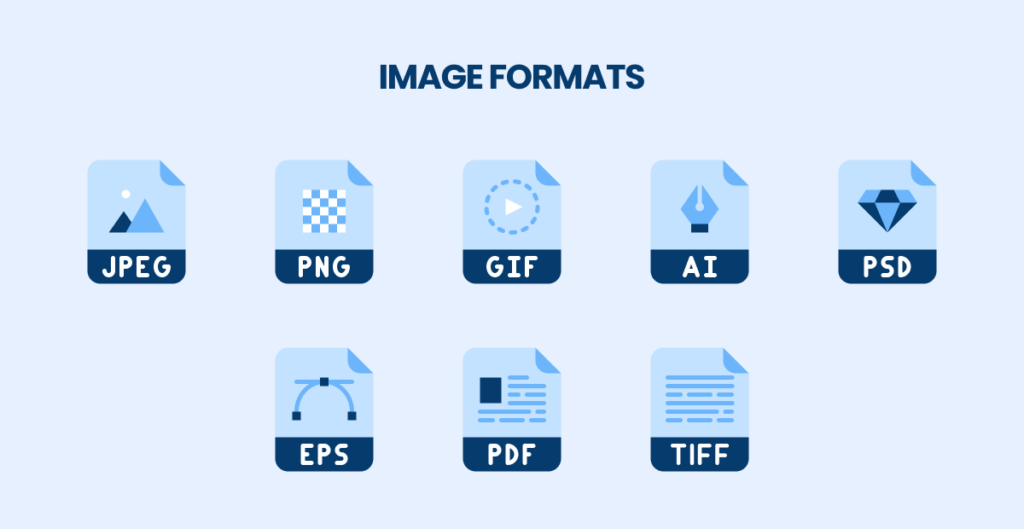
This aspect of image optimization impacts user experience and plays a significant role in how search engines evaluate and rank your website.
Importance of Image Compression
Image compression reduces the file size of your images without significantly compromising their quality. Effective compression is critical to SEO image optimization, affecting website performance and ranking.
- How Compression Affects Load Time: Large image files can significantly slow page loading, leading to a poor user experience and increased bounce rates. Compressing these images reduces their file size, allowing them to load faster, which enhances user engagement and retention.
Website speed optimization, particularly through image compression, is essential as it directly impacts SEO rankings. Search engines prioritize websites that load quickly, considering them more user-friendly.
- Impact on SEO: Besides improving load times, image compression affects SEO in several ways. Smaller image file sizes reduce the bandwidth needed to load a page, positively influencing a website’s crawl budget.
This means search engines can index more website pages within their crawling limits, potentially boosting your SEO performance. SERP will provide the relevant results.
Moreover, image SEO optimization through compression will become even more critical as future SEO trends increasingly favor websites optimized for speed and efficiency.
- Technical SEO Audit Considerations: Image optimization is often scrutinized during a technical SEO audit to identify opportunities for improving site performance. Audits typically assess image sizes and formats and how effectively images are compressed.
This analysis can help pinpoint technical shortcomings that, once addressed, can significantly improve a site’s SEO standing.
Additionally, incorporating advanced techniques like natural language processing (SEO) can enhance image descriptions (alt text), making them more relevant to the content.
This helps align images more closely with search queries and user intent. Moreover, search intent optimization is tailoring your content to align more closely with the specific desires or needs that drive people to search for particular topics online.
Understanding and implementing effective image compression techniques are essential for any business looking to improve its online presence.
As SEO evolves, staying ahead by optimizing image file size and format will not only enhance user experience but also strengthen your website’s SEO foundation. In this situation, don’t neglect the importance of Mobile SEO, which will reach the palm of every user and deliver a swift message.
The Future of Image SEO
Image SEO is rapidly evolving, driven by technological advancements and changes in user behavior. As we look toward the future, it’s clear that emerging technologies such as artificial intelligence (AI), machine learning, and various SEO trends are set to play a pivotal role in how we optimize images for better search engine visibility and user engagement.
Emerging Trends in Image Optimization
Integrating AI and machine learning into image SEO optimization significantly shifts how digital marketers approach content visibility and user interaction. These technologies are transforming image optimization in several key ways:
- Automated Image Tagging and Alt Text Generation: AI technologies are increasingly used to tag images and generate descriptive alt texts automatically.
This not only enhances the accessibility of images but also aligns with SEO best practices, ensuring that images are indexed correctly and appear in relevant search queries.
Natural language processing (NLP), a subset of AI, generates contextually relevant alt texts, enhancing the user experience and a site’s SEO.
- Image Recognition and Visual Search: Machine learning models are becoming adept at recognizing image content without manual input, facilitating more sophisticated visual search capabilities. This technology allows users to search for products and content through images, becoming a significant trend in e-commerce and online searches.
Optimizing images is now more crucial for businesses, as visual search capabilities can drive significant site traffic.
- Predictive Analysis for Trend Forecasting: AI is also being used for predictive analysis to forecast trends and determine which types of images will engage users most effectively.
By analyzing large datasets, AI can help predict future SEO trends, enabling marketers to stay ahead by adapting their strategies in advance.
- Optimization for Speed and Efficiency: Website speed optimization remains paramount as web technology evolves.
Future developments in image compression and format conversion will likely leverage AI to optimize images in real-time, ensuring that they load quickly without losing quality, which is essential for user experience and SEO.
Preparing for Changes in SEO Practices
Staying current with SEO practices is critical for maintaining and improving your website’s search engine rankings. Here’s how you can prepare for and adapt to ongoing changes in SEO, particularly regarding image optimization:
- Regular Technical SEO Audits: Regular technical SEO audits are essential to identify and rectify issues that could impact your site’s performance. These audits should include checks for image size, format, alt text accuracy, and loading speed to ensure your site remains optimized according to the latest SEO standards.
- Continued Education and Training: SEO is an ever-changing field, and continuous learning is crucial for staying informed about the latest trends and techniques. Attending webinars, taking courses, and reading up-to-date content from trusted SEO resources can help you keep pace with the changes.
- Implementing Schema Markup: Utilizing schema markup is another effective way to enhance image SEO. Schema markup helps search engines understand the context of images and other content types, improving the likelihood that they will be featured in rich results. Implementing and regularly updating schema markup can boost your site’s visibility and user engagement.
- Adopting Agile SEO Strategies: It is vital to be able to quickly adapt SEO strategies in response to algorithm updates and new technologies. This includes being prepared to integrate new tools and processes, such as AI-driven SEO tools, into your workflow to enhance efficiency and effectiveness in your SEO efforts.
By embracing these technologies and preparing for future changes, marketers and SEO professionals can ensure that their image content remains powerful and effective in driving both traffic and engagement.
As AI and machine learning continue to evolve, the landscape of image SEO will undoubtedly offer new opportunities and challenges that can dramatically reshape online marketing strategies.
Partner with [A] Growth Agency for Your Image Optimization
There’s a whole SEO treasure trove beyond crafting the perfect alt text.
Don’t let your images be silent partners in the SEO game. By following these image optimization best practices, you will turn them into SEO superheroes.
[A] Growth Agency will implement your dreams into reality. Growth is our driving force – but speed and execution are our keys to success.
Our experienced marketers leverage cutting-edge strategies and tools to accelerate your business’s growth. With a focus on scalability and efficiency, we tailor our services to meet each client’s unique needs.
From SEO and SEM to content creation and digital advertising, our team ensures that every campaign reaches and exceeds your expectations.
Let us drive your success with our expert insights!
